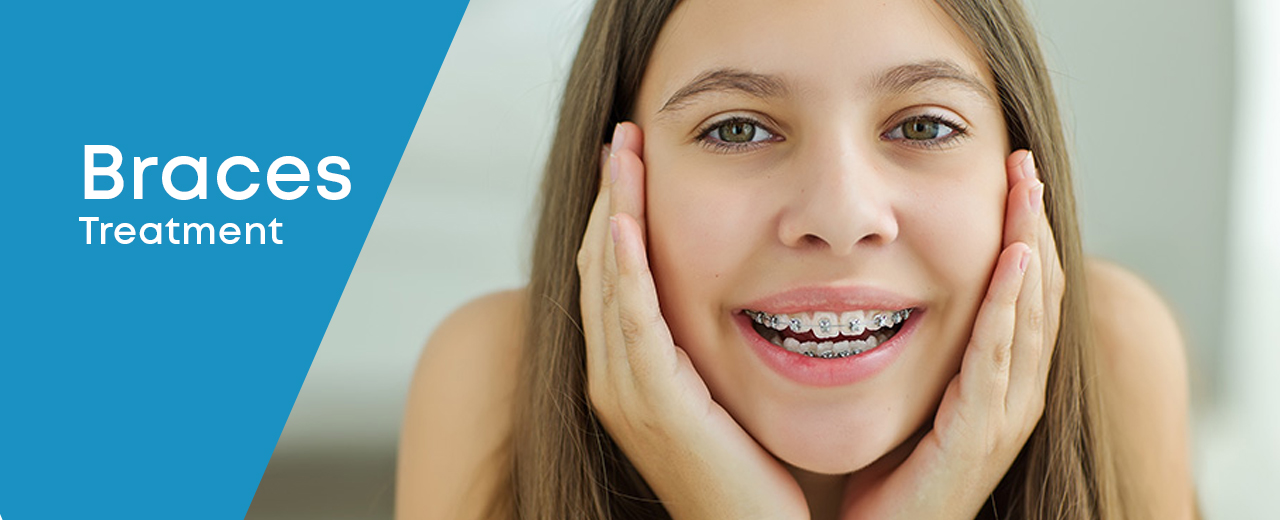

Spacing and crowding of teeth can be corrected by using braces and wires on teeth & bringing them to the normal space.
Orthodontics is a specialized branch of dentistry that is concerned with diagnosing, treating, and preventing malocclusions (bad bites) and other irregularities in the jaw and face. Orthodontists are specially trained to correct these problems and to restore health, functionality, and a beautiful aesthetic appearance. Though orthodontics was originally aimed at treating children and teenagers, almost one-third of orthodontic patients are now adults. A person of any age can be successfully treated by an orthodontist.
Braces are appliances that the orthodontist uses to correct the alignment and the way your teeth meet each other(Occlusion). These braces are either fixed on to the teeth or rest against your teeth and bring about the desired movement of your teeth.
Metal Braces: Conventional metal braces are the most common and still widely used braces treatment. They give the same result when compared to other types of braces but the only disadvantage is that they are unaesthetic.
Ceramic Braces: Ceramic braces make wearing braces less noticeable and hence, look aesthetic. They can be combined with vibrant colored elastics giving you a fancy look. These are braces that are commonly preferred.
Lingual/Invisible Braces: Lingual braces are attached to the inside or the lingual side of the teeth which makes them completely invisible. Lingual orthodontics is particularly well-suited for adults whose profession keeps them in the public eyes such as actors, models, etc.
Invisalign: Invisible, removable braces are made from the CAD-CAM technique. Being transparent and of high aesthetic value, it is widely used by actors, models, and public personalities.
Improves your smile: A good smile adds up to the personality of an individual. A fabulous smile makes you attractive and also improves one's confidence levels. Braces improve your smile and therefore improve your appearance.
Improves chewing: Teeth are an important part of the digestive system. Chewing of food by the teeth is the beginning of the digestive process before the food is passed on to the tummy. So having a good bite improves the function of the teeth.
Prevents other dental problems: Crooked teeth prevent maintenance of good oral hygiene. This can lead to other dental problems such as dental decay and gum diseases.